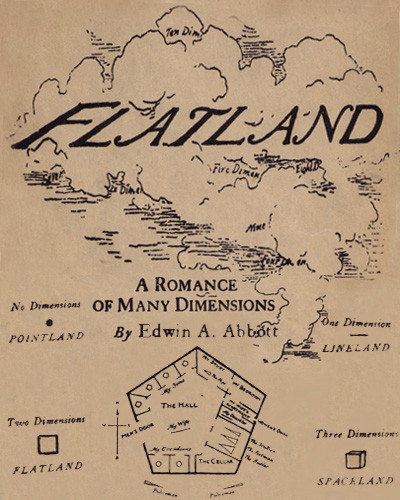By Leah Aronowsky
Perhaps it comes as a surprise to learn that, as apoint of departure for launching an experiment in collaborative research, a group of environmental humanities scholars chosea nineteenth-century book about math. Flatland: A Romance of Many Dimensions is a sci fi novella told from the perspective of a denizen of Flatland, a two-dimensional worldwhere women are lines and men are polygons.
Written in 1884 by British schoolmaster and theologian Edwin A. Abbott, Flatland follows its protagonist, A Square, as he accidentally stumbles from the comfort of his 2D world into the worlds of 1D Lineland and 3D Spaceland, each with their own distinct, geometrically-determined social orders and ways of life. Through these sojourns across space and dimensionality, the narrator is forced to reexamine what he once took to be the limits of the geometrically possible.
In its day, Flatland was received as equal parts social satire, science fiction, and geometry lesson. Yet from our contemporary vantage, the book typifies still another genre: experiment in environmental humanities. Flatland is an exercise in interrogating one’s present reality—defamiliarizing it, denaturalizing it, making it strange. Its overarching message is that the narrator’s world, Flatland, is not the only world possible. In this, the book is emblematic of a promising on going project in environmental humanities: that of historicizing our current planetary condition, of reading against the grain of everyday life to ask, how is it that we arrived at this version of environmental reality?

check out other Flatland contributions below









